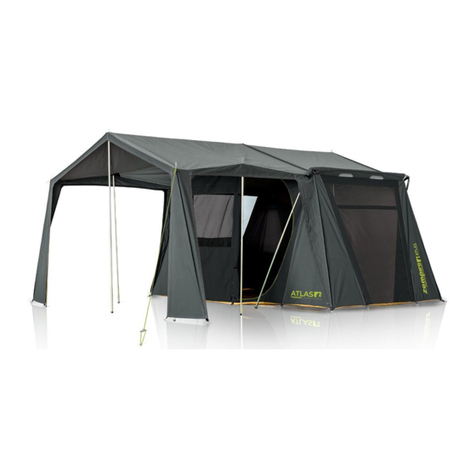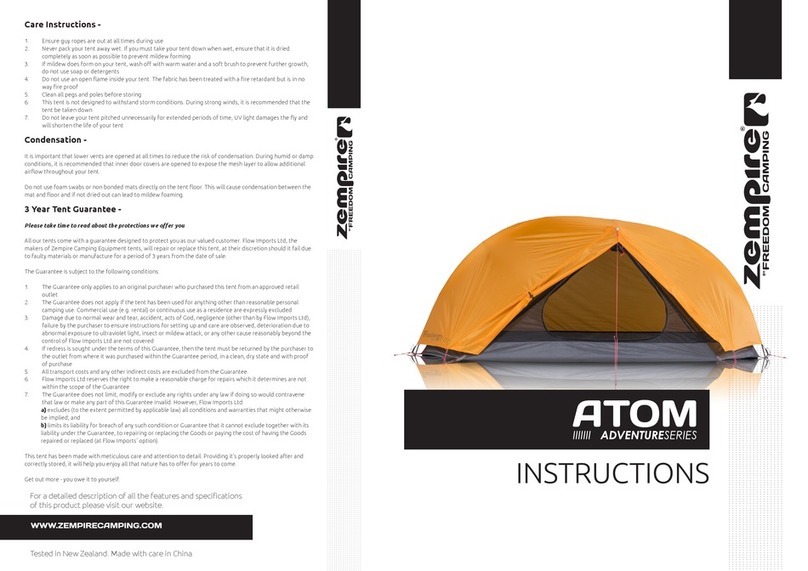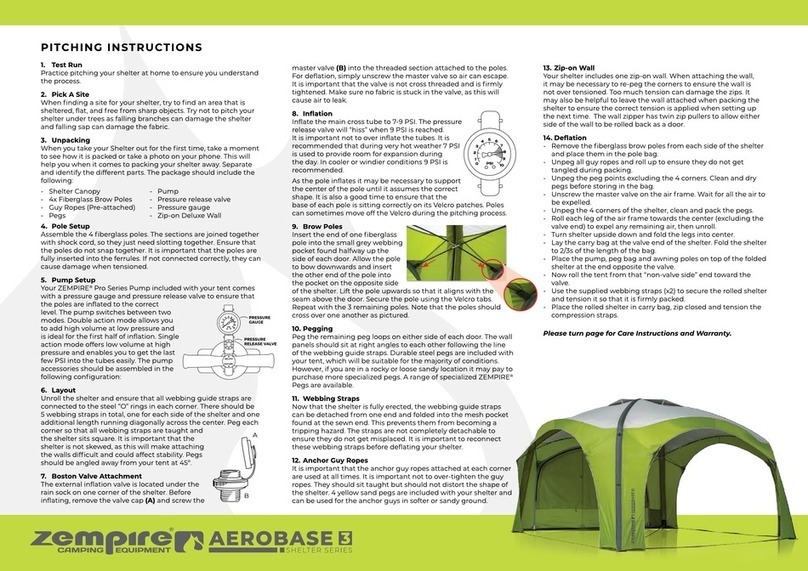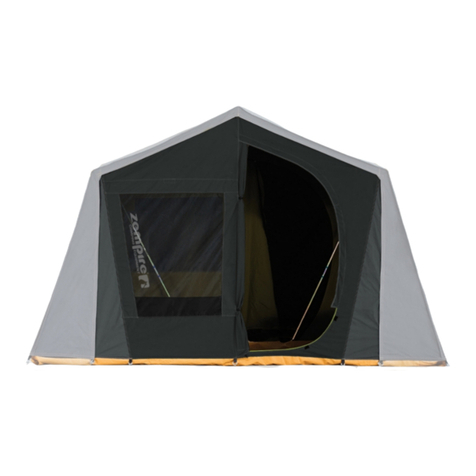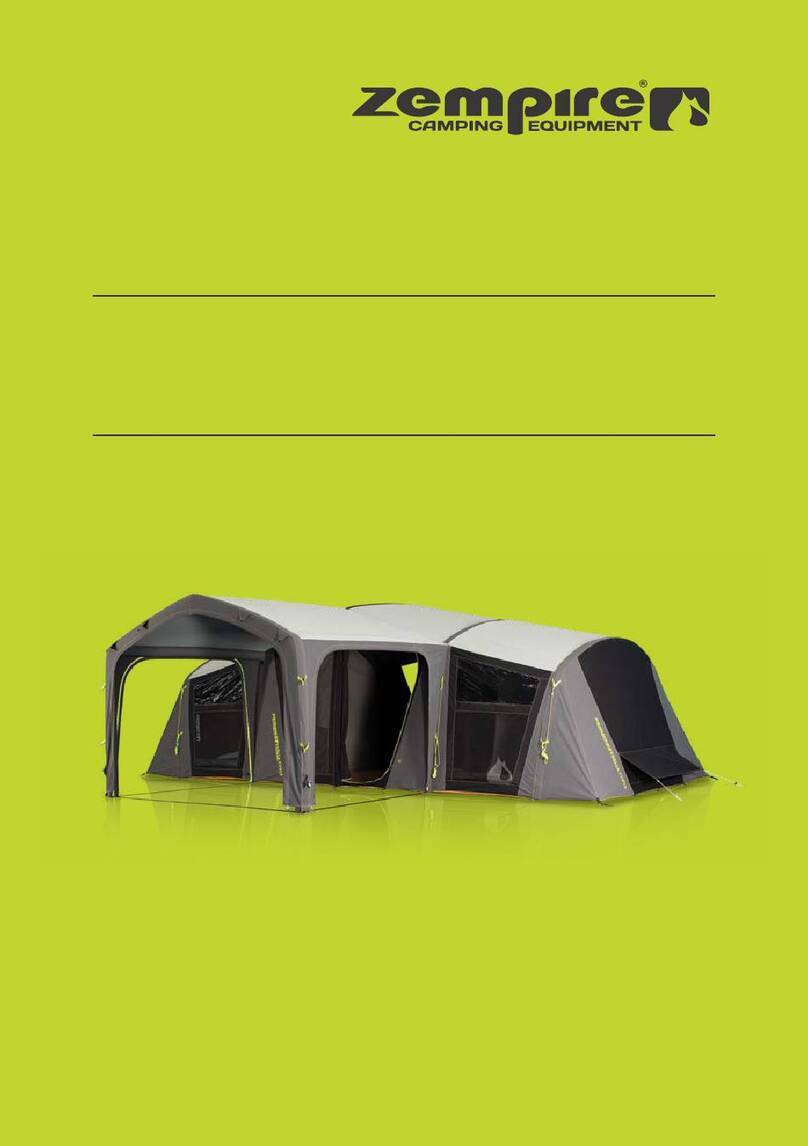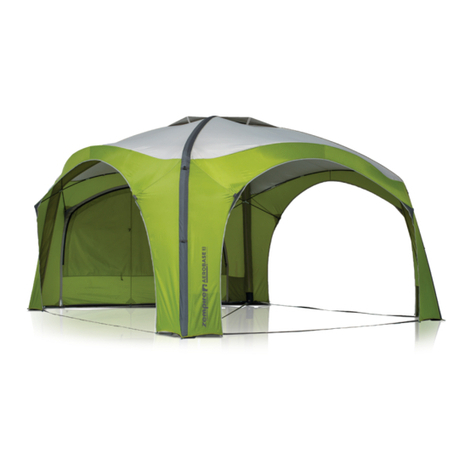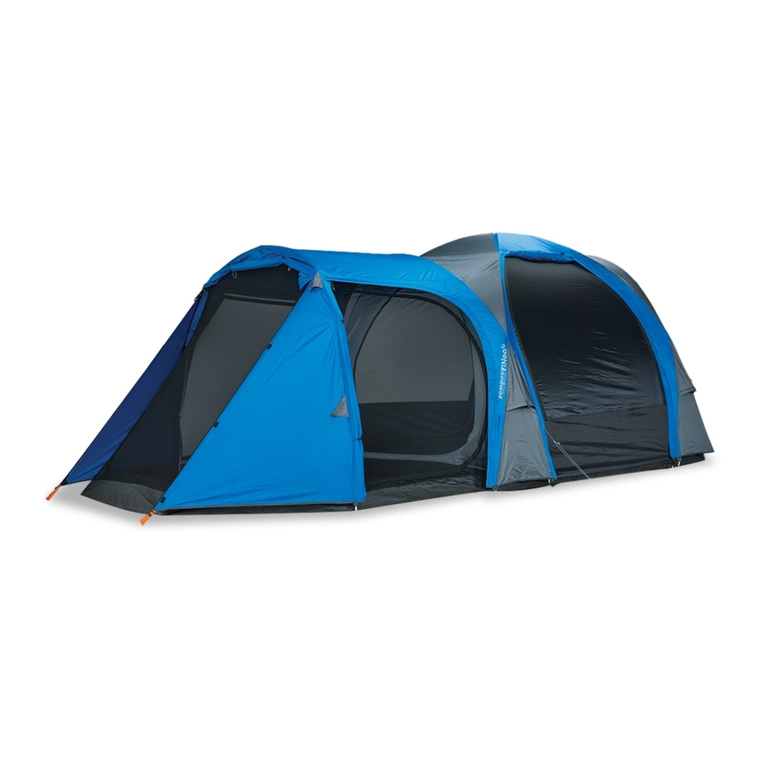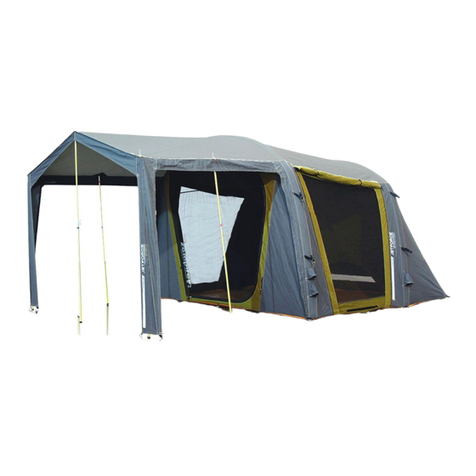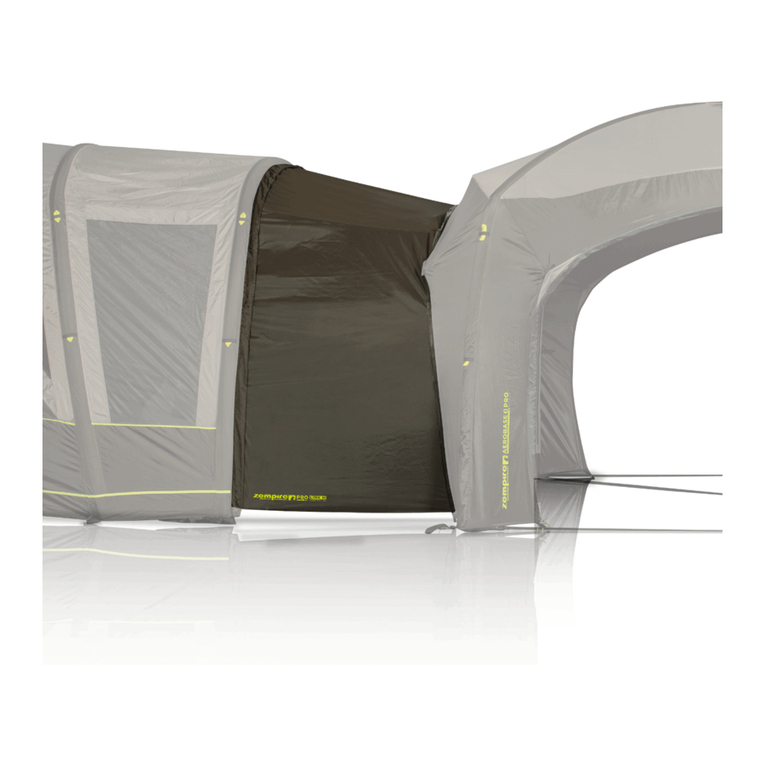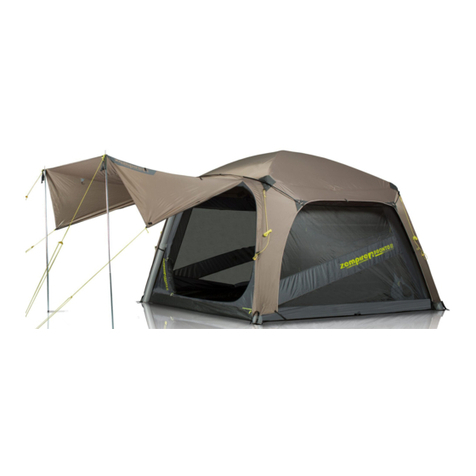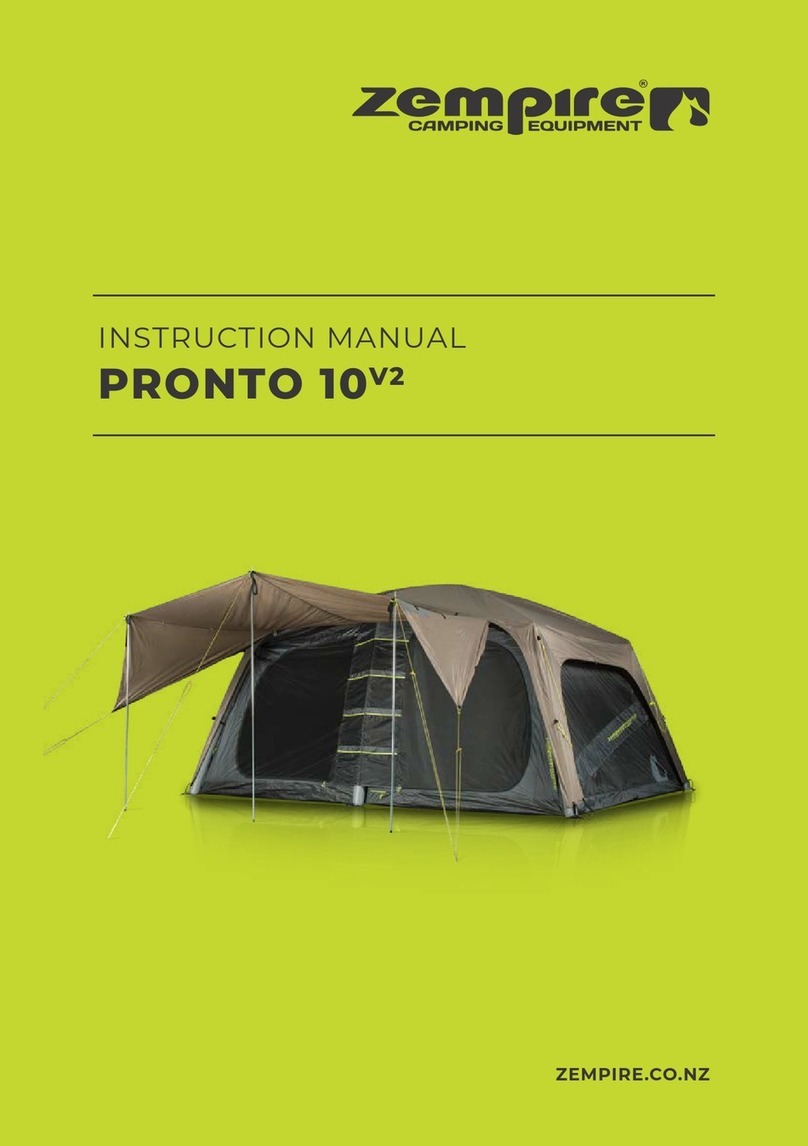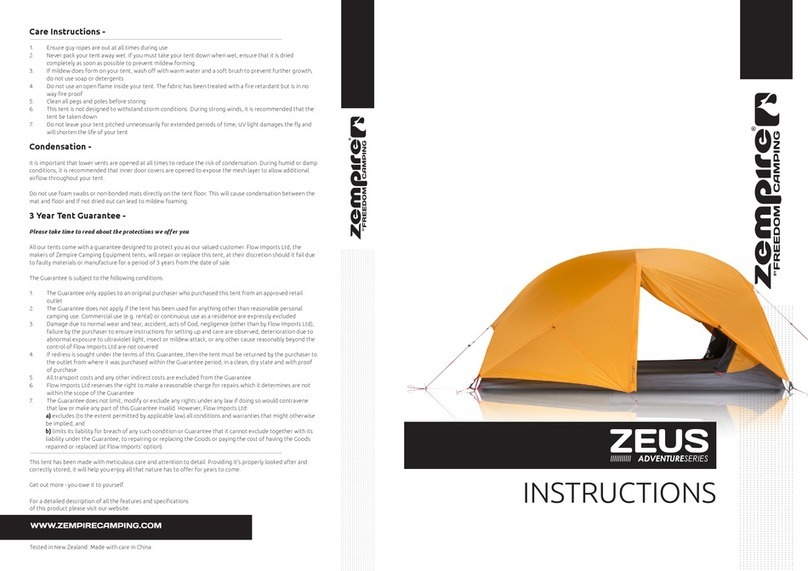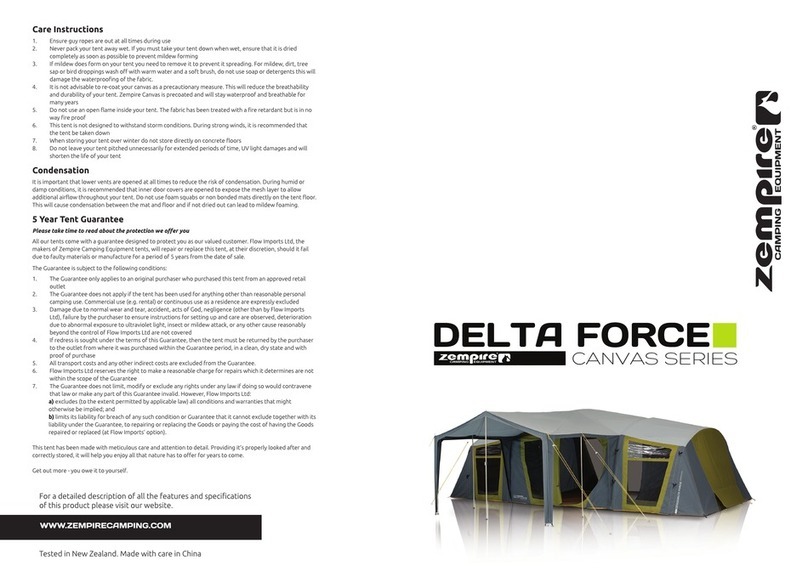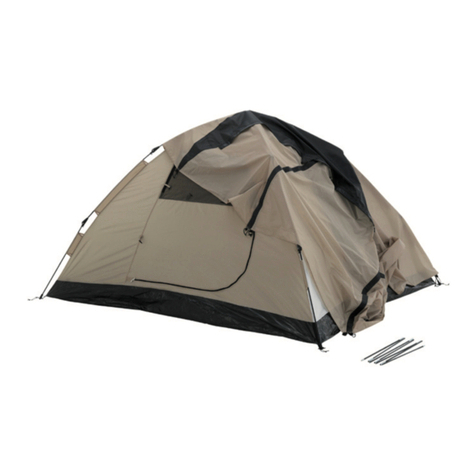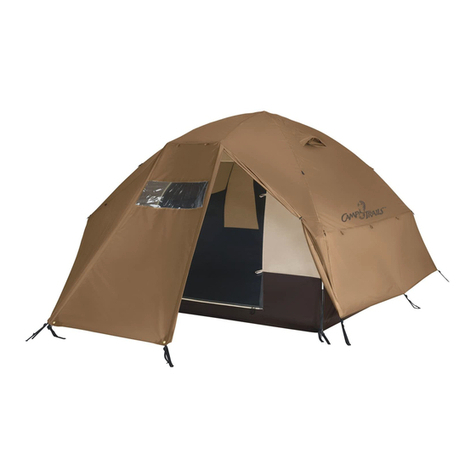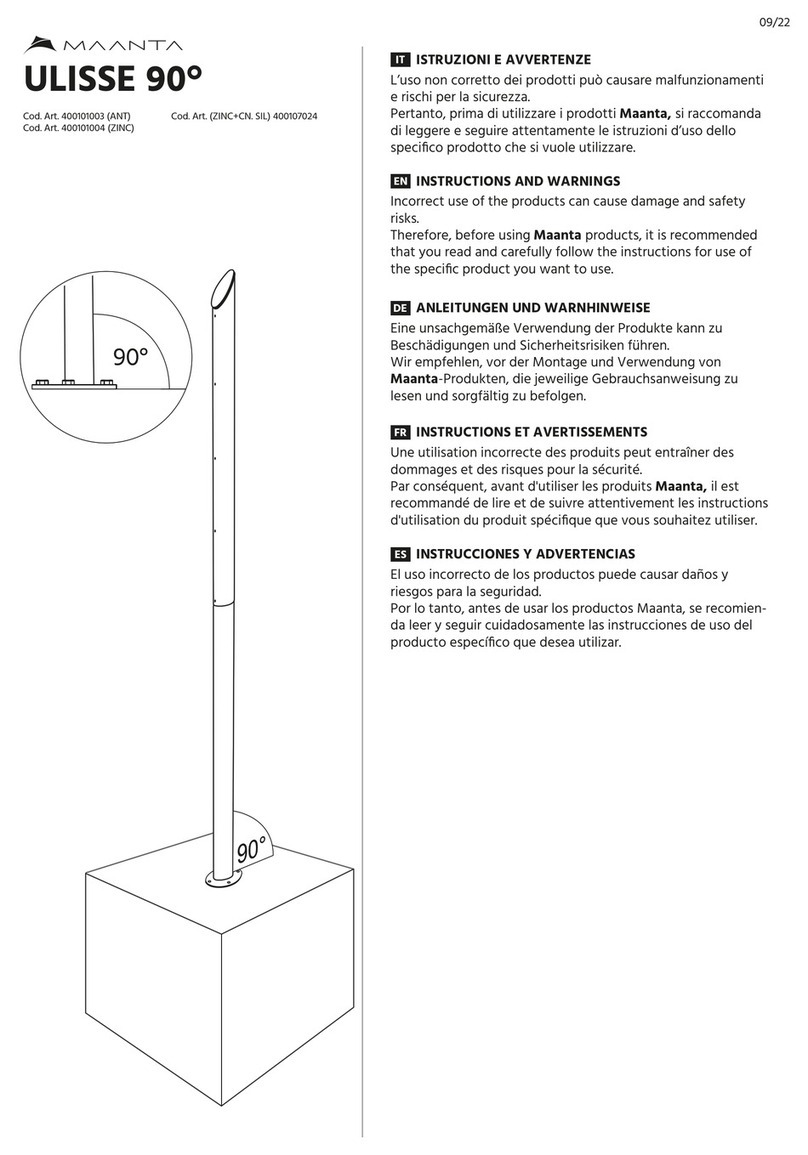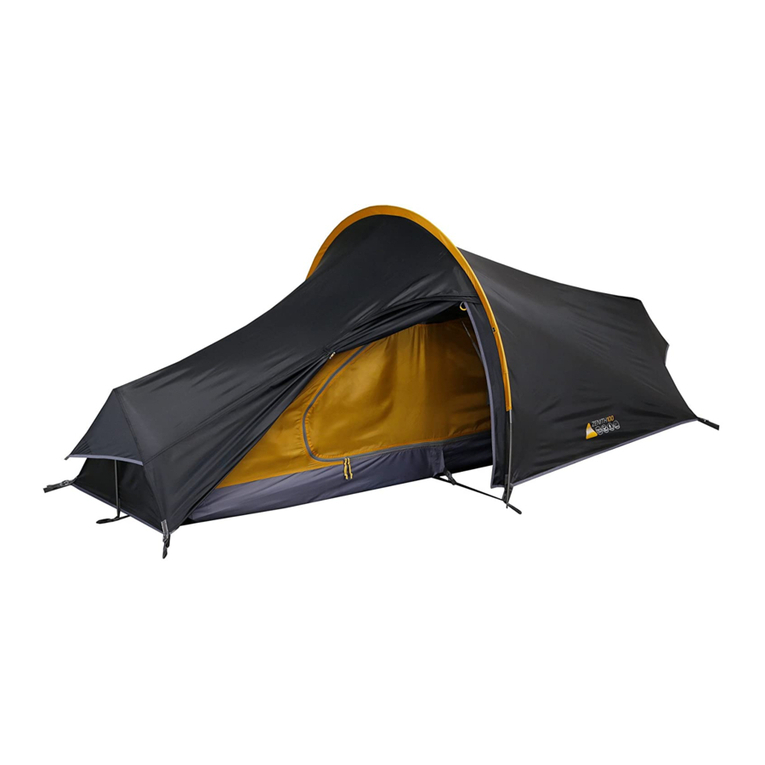
Ination
Inate the main cross tube to between 7 and 9 PSI. The pressure release valve will “honk”
when 9 PSI is reached. It is important not to over inate the tubes. It is recommended that
during very hot weather 7 PSI is used to provide room for expansion during the day. In
cooler or windier conditions 9 PSI is recommended. As the pole inates it may be neces-
sary to support the center of the pole until they assume its correct shape. It is also a good
time to ensure that the base of each pole is sitting correctly on the Velcro patches. Poles
can sometimes move o the Velcro during the pitching process.
Siting
When nding a site for your shelter, try to nd an area that is sheltered, at, and free from sharp objects. Try
not to pitch your shelter under trees as falling branches can damage the tent and falling sap can damage the
fabric
1Test run
Practice pitching your shelter at home to ensure you understand the process
Unpacking
When you take your Shelter out for the rst time take a moment to see how it is packed or take a photo on
your phone. This will help you when it comes to packing your tent away. Separate and identify the dierent
parts. The package should include the following
- Shelter Canopy - Pump
- 4 Fiberglass Pole Lengths - Pressure release valve
- Guy Ropes (Pre-attached) - Pressure gauge
- Additional guy ropes - Pegs
- Zip on Deluxe Wall
Assemble the Fiberglass pole lengths. The sections are joined togeth-
er with shock cord so they just need slotting together. Ensure that the
sections do not snap together and each section inserts fully into the
adjoining pole
Pump Setup
Your Zempire ® double action pump includes a pressure gauge and
pressure release valve to ensure that the poles are inated to the
correct level. A double adapter is also included that allows two poles to
be inated simultaneously. The pump accessories should be assembled
in the following conguration:
Layout
Unroll the shelter and ensure that all webbing straps are connected to the steel “o” rings
at the base of each pole length. There should be 4 webbing straps connected to each pole
forming a square and one webbing length running diagonally across the center. Tension
each corner so that all webbing lengths are taught. It is important that the shelter is not
skewed, as this will make attaching the walls dicult. Peg each corner. Pegs should be
angled away from your tent at 45º
Valve attachment
The external ination valve is located under the rain sock on one corner of the shelter.
Before inating, the valve will need to be attached the pole opening. Remove the valve
cap and screw in the remaining section into the pole opening. It is important that the
valve is not cross-threaded and is screwed rmly.
Pegging
Peg the remaining peg loops on each side of the pole. These panels should sit at right angles to each other
owing the line of the webbing. Durable steel pegs are included with your tent, which will be suitable for the
majority of conditions. However, if you are camped at a rocky or loose sandy location it may pay to purchase
more specialized pegs. A range of specialized Zempire ® pegs are available from your local dealer.
Webbing Staps
Now the shelter is fully erected the webbing straps can be detached from one end and folded into the mesh
pocket found at the sewn end to prevent them becoming a tripping hazard. The straps are not completely
detachable as to ensure they do not get misplaced. It is important to reconnect these webbing straps before
deating your shelter.
Anchor Guys
It is important that the anchor guys attached to the end of each Fiberglass pole lines are guyed out at all
times. Do not over tension as this can distort the pole shape and reduce stability. 4 yellow sand pegs are
included with your shelter and can be used for the anchor guys in softer or sandy conditions.
Zip On Wall
Your shelter includes one zip on wall. When attaching the wall it may be necessary to re-peg the corner peg
points to ensure the wall is not over tensioned. Too much tension can damage zips. It may also be helpful to
leave the wall attached when packing the shelter to ensure the correct tension is applied when setting up
again. The wall zipper has twin zip pullers to allow either side of the wall to be rolled back as a door.
UV Degradation
Shelter fabrics can be weakened from prolonged exposure to sunlight. Under normal holiday use your Zempire ®
shelter will give you many years of camping enjoyment, but use in extended periods of strong sunlight will cause
degradation. UV Degradation is not covered under warranty. The warranty does not cover permanent sites, displays
or for commercial purposes.
Deation
- Remove the support poles from each side of the shelter and place in pole bag
- Unpeg all guy ropes and roll up to ensure they do not get tangled during packing
- Unpeg the peg points excluding the 4 corners. Clean and dry pegs before storing in the bag
- Open the valve on the main pole. Wait for all the air to be expelled
- Unpeg the 4 corners of the tent, clean and pack the pegs
- Role each pole end excluding the valve end to expel the remaining air, then unroll
- Turn shelter upside down.
- Fold Legs into center
- Lay the carry bag at one end of the shelter. Fold the tent to 2/3s of the length of the bag.
- Place the Pole, Pump, and Peg bags on top of the folded shelter
- Roll tightly
- Using the webbing straps tension the shelter.
- Place in carry bag and tension
2
3
4
5
6
8
9
11
12
Support Poles
Insert the end of one length of berglass pole into the
small grey webbing pocket found halfway up the side of
each door. Letting the pole bow downwards, insert the
other end into the pocket on the opposite of the shelter.
Lift the pole upwards so that is aligns the seam running
above each door. Attach Velcro. Repeat with remaining 3
poles. Note that the poles should cross over one another
as below.
10
7


